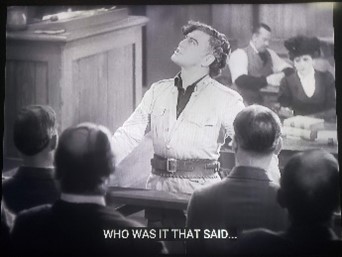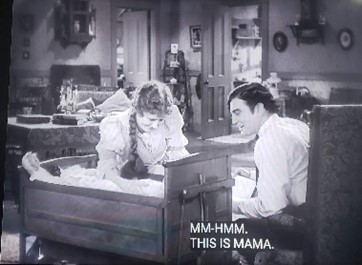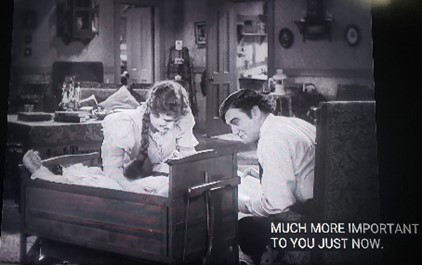Reading Rosa Menkman’s The Glitch Moment(um) inspired the experimentation with “glitching” something meaningful and at the same time reminded of some of the experiences I have had with glitches. This reading not only inspired me in what to write but in how to write. I liked the way in which she introduces the concepts while presenting her own examples. I will replicate that technique throughout this document. There are three major fields in which I have profoundly delved into throughout my life that can be subjects of glitches: photography, film and, of course, videogames. I will present throughout this paper one example per area. I will explore those glitches here in this paper, examine its causes and the effects, analyze their potential utility, as well as to try and investigate if I can discover truth in the words of Paul Virillio and Julie Rose who said that “the accident resides beyond the classical opposition of functional versus dysfunctional. In the introduction to the Deaf ’98 festival Reader, the accident is even described as hyper-functional. The accident (and thus the glitch) shows a system in a state of entropy and so aids towards an understanding of the ultimate functioning of a system. This opens up space for research and practice, and the arts are a special domain for this1.” Of course, they were not first to say such things. Michelangelo is the first person I heard of, known for implementing the accidents of the marble into his masterpieces2, thus first making glitches a functional part of a work system3. There is yet One even before him, because what is evolution if not the functional implementation of mutations (glitches) in the development, diversity and perpetuation of life?4 Before I continue on philosophizing, let us jump right in and begin to take part in this research/creative process.
So far we have been using the word “glitch” fairly arbitrarily with certain assurance that the audience knows what I am referring to, which is a symptom of how well the word has permeated daily life. Nonetheless, let us formally define it. The American Heritage® Dictionary of the English Language, first recorded the word glitch in English in 1962 in the writings of astronaut John Glenn, who describes glitch as a term adopted by his team ‘to describe some of our problems’. First adopted, as ‘literally… a spike or change in voltage in an electrical current’ and then applied to a range of ‘other, not-yet-specified’ problems.5
The First Example
Menkman’s reading awakened that curiosity of studying how glitches can be applied to photograph. More specially her “databent by copy-pasting a selection of random image data over and over into the original file.” (Menkman p. 32) Similarly to her, I did not know how hexadecimal code played a role in a picture. Then, glitching the original images helped me understand exactly what certain numbers or letters mean. Though I do not understand it completely yet, I understood certain functionality of the symbols. Letters appear to be related to the shape, or positions of the pixels. The following is what I got by focusing on changing letters only, erasing all letters “F” from the code (just as I hope for my college transcripts):
Everything became pink except for a bright blue square right in the middle, where the top of a building should be and at the bottom edge. It is strange that it somehow still contains different levels of pink and that every level of color corresponds to a level of profundity in the original picture.
Then I tried changing only the numbers. I got rid of the number 30 everywhere I saw it, and this the result:
Changing the digits caused everything to become blue. The bottom part remains seemingly untouched, which is strange. To summarize, modifying the letters caused the image to become pink while modifying the numbers made it all blue. Further experimentation and studying needs to be made in order to confirm whether this is the case for every other image. Are we in front of an interesting pink and blue dichotomy that computers are not able to escape? Both attempts resulted in the image being cut and misaligned in certain areas.
It seems that certain things can be useful even when damaged. A person can look at the pink square and maybe find some use for it: a painter looking for color inspiration or a programmer in training can look to fix these kinds of mistakes, for instance. This, along with previous observations, lead to the same conclusion: Deformed (gliteched) material can only be useful given some very particular set of circumstances, whereas original material seeks intentionally to be useful, thus results in being so most of the time.
The opposite can also be true. A work trying really hard to be useful can result in being completely useless. ‘When we understand that slide, we’ll have won the war, ‘ General McChrystal joked. The room erupted in laughter”6 referring to the Afghan relations graph below.

It must have been funny back when no people had died or been abused and imprisoned as a result of this incompetence which became especially apparent in recent months. It is clear now that they did not understand the graph at all and as predicted by general McChrystal, lost the war. But why is it so ineffective? When corruption and incompetence are so closely intertwined, it is difficult to figure this out. Did they purposely make this graph so complex so that the public did not understand it nor asked questions, or to give a sense of confidence by appearing to have the situation deeply understood? Did the graph was based in reality at all? If not, even if someone was able to decipher this, it would still be completely useless. Maybe we will never know, and interestingly enough, the answer to those questions would determine if this were a glitched image. According to our definition above, it is a glitch only if the result is unintended, unexpected, like the spikes in voltage. If this is willful ignorance, an intentionally misleading graph, then it is not a glitch. Losing the war would be an expected result. If they were really trying to understand the situation through this graph, then it would be a glitch because the intention was clarity, and the result was confusion. The catastrophic result is the same, the cause would be different. Stupidity or corruption. The current administration makes it almost impossible to discern.
This graph was added here not only because it serves very well to explore the contrast between glitch and otherwise but also because it is indeed pretty. The color palette is attractive, and the information is uniformly spread, well-balanced, the labels are somewhat equidistant, but as an analysis tool, it is completely infective. Nothing can be gathered from it; nothing can be quantified. How many insurgents are there? narcotics? popular support? what do the lines mean? It raises questions because the person who made this had good visualization design notions yet did not come up with a better design. It is an ornament, not a useful tool. It also makes you wonder how much of the government fits that description.
Unlike the previous example, here maybe is a perfect example of when deformities can be of use. The picture below, though aligned to look like a single image by using an image editor, is actually a collage of two. I dare the reader to stop for a moment to try to determine which one is the original photo, and which one is “glitched”.
If the observers were not able to notice the tiny break around the edges to the left of the picture, it would be virtually impossible to determine which one is which. Even more so when the “glitched” photo looks better illuminated, more professional than the original. This change, which would take maybe fifteen minutes or more for an average user of Photoshop to achieve, took less than a second by changing only two letters of the hexadecimal of the code. It removed the excess lighting by reducing the yellow and red in just the right amount making the image look sharper. This could potentially become very useful knowledge, a glitch that is useful.
This is the original photo.
Now a very brief background on this picture just to share why this image was chosen as meaningful. It was taken in 2020 when we were no longer allowed into our offices and were first sent to work from home when panic was at its peak. I was lucky to have the opportunity to make this my “office”, at least for those three days. Working at an agency involved directly in fighting the pandemic, things at work became incredibly stressful after that, but the thought of how even the worst pandemic in history can be seen as a half-full-glass situation, even if only for those initial three days before everything went hectic for me, stuck with me. I have witnessed many examples like these throughout this life. Despite the many difficulties, I still am immensely grateful for the gift of life.
The Second Example
About a year ago, me and my older brother embarked on the journey of watching every single Academy Award Winning movie. Considering the contest started back in 1927, we were expecting this to be painfully boring in the beginning as they are “silent, black and white and surely overacted movies”. It turned out to be not only an extremely useful exercise in our capacity of film criticism and a fantastically entertaining voyage, but also an enlightening cultural discovery, especially for people who relatively recently moved to the United States. While watching Cimarron, which was filmed in 1931, we were absolutely shocked when finding that the America that is so insistently attempted to portray in mainstream media today, never existed, or at least it was no longer true back as early as 1931 (and even further back as its story starts unfolding in 1889). So much was the shock that I took pictures of all those epic unexpected moments, totaling 55 photographs, without ever thinking this was going to be useful for a class. I guess this could be the first layer of glitch in this visualization experience and I liked this movie so much that I decided to “glitch” it even further. This is the result:
It would be insufficient and disrespectful even to introduce such an image without providing any context.

In the film, there were of course, various cultural aspects then that would appear controversial today; but were not nearly as many as we were expecting from a movie so distant in time. Where we were anticipating an oppressive society dedicated to humiliating women through religion, we found a man accurately quoting Jesus Christ from the Bible to defend a woman in trial accused of prostitution.
“Who was it that said, ‘come unto me all ye that are weary and heavy-laden, and I will give you rest’? She is, indeed, heavy-laden.” “Dixie Lees have been stoned in the marketplace for 2000 years” making a reference to the time when Jesus defied those who were about to legally kill a woman, and in a first in history, the accusers left confronted with the fact that they were not worthy of making such a judgement. Equality between men and women was making its first appearance in the Western World, today it is the beacon of equality across the globe7. And so, the male main character of the movie continued successfully defending the accused woman until her total acquittal. All this was only about half an hour after a monumental speech of unity among peoples of different backgrounds quoting the same book.
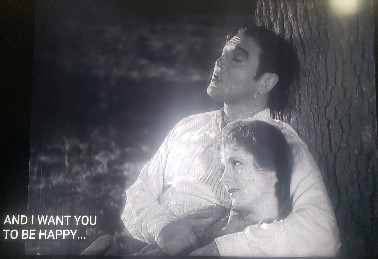
Where we were sure to find a man constantly beating his wife up while berating her with sexist slurs; there was a loving man truly inspired by his wife’s happiness. A man who would remove himself all the time to give his wife her rightful place. Soon, he gave her command of everything he possessed.
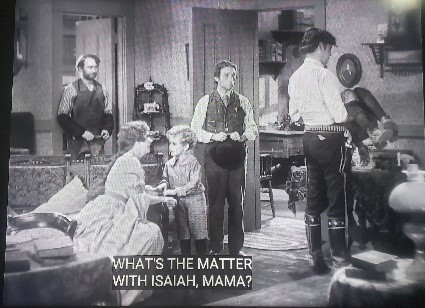
Where the world full of hateful whites bent on destroying black people at every single opportunity was supposed to appear, there was a beautiful friendship, almost a brotherhood between the main male character and a black kid. I saw the entire family mourn the heroic passing of said character. According to what I had been taught, I was not expecting to see anything remotely like this in a 1931 Academy Award Winning movie.
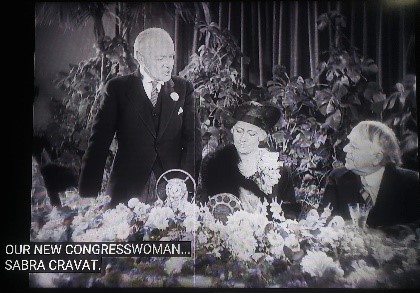
Where I was expecting to see a society completely inequal, with no opportunities for women anywhere, I saw a State proudly celebrating their new Congresswoman who is also an entrepreneur, a boss lady. A woman who has several men under her supervision. All men around her continue clapping happily to their new representative.
Cimarron, a pre-Code epic Western film directed by Wesley Ruggles, starring Richard Dix and Irene Dunne, and featuring Estelle Taylor and Roscoe Ates; and written by Howard Estabrook based on the 1930 Edna Ferber novel Cimarron, would be RKO’s most expensive production up to that date. It is also one of the few Westerns to ever win the top honor at the Academy Awards8. If it was not an accurate representation of its time, it at least reflects all the values, the vision, and direction of the United States. A vision that has made this nation so successful. It was a movie ahead of its time, pointing towards the most tolerant, advanced, and least racist society the world has ever seen.
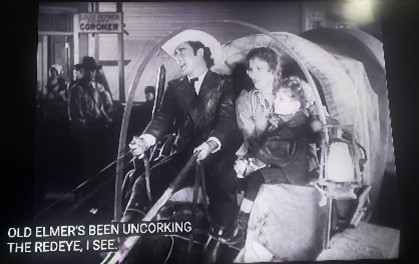
And just as if all that were not enough, it has a character with a cool name: Elmer. (It was a drunkard who barely appears on screen, but regardless, the name is very important.)
Aware of the considerable yet necessary9 length of the description of the medium, we will now proceed to work on it and explore its consequence. I put every photo of the movie together by using ImageJ, which is a Java-based image processing program developed at the National Institutes of Health and the Laboratory for Optical and Computational Instrumentation (LOCI, University of Wisconsin)10. ImageJ can do a multitude of things, among which is mixing images together with the same level of transparency one on top of the other. It can glitch images. The pictures described above, when mixed, gave rise to this:
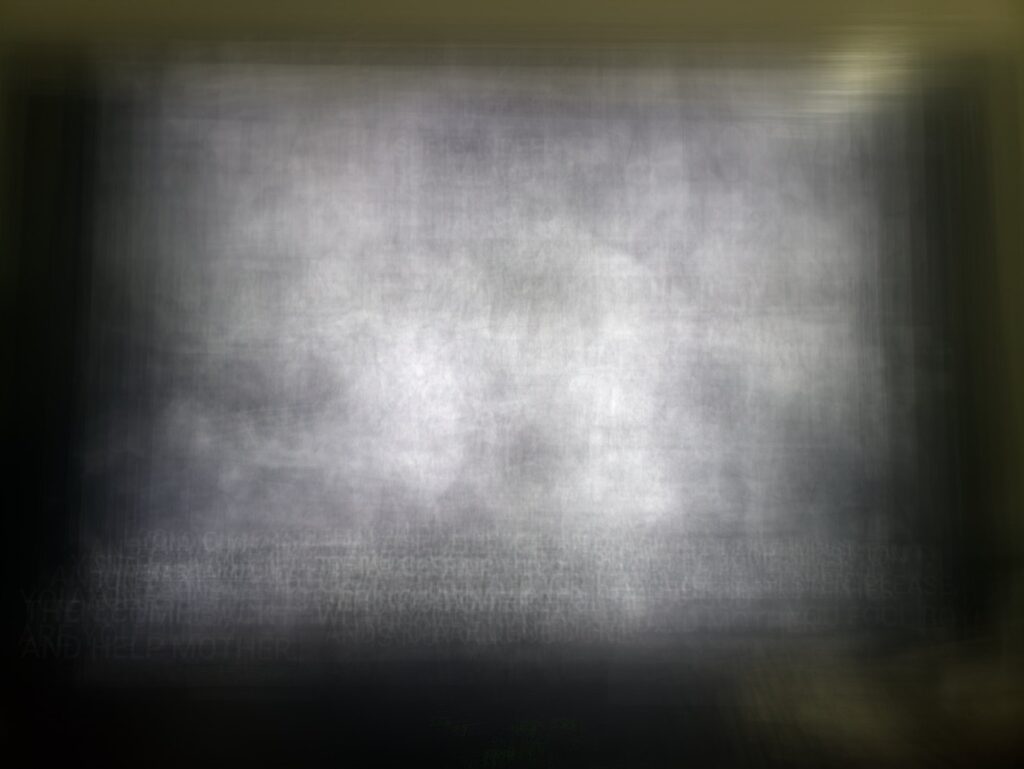
For some strange reason, I find this resulting image to be… pretty. Though not directly related, it reminded me of a work by Jason Salavon who in his The Grand Unification Theory 1997 presented entire films in a single view in what becomes a type of tapestry composted of little squares each of which is frame of a second of the movie11. Just as in this case, the result is an unintended enigmatic, but pretty image. Maybe the average person is completely unaffected by this gray square and sees this as nothing but as a ruined picture. Despite the effort of transmitting the meaning of these pictures via the detailed descriptions above, I could still be biased by the fact that I know what a good movie it comes from and the meaningful images it is composed of. Yet there are a series of observations that I would not credit to that fact. The images are all unedited, but create a gray area well centered, surrounded by some type of frame which gains a level of three dimensionality by an unintended shine at the upper right corner of the screen. This sense of volume is increased by the darkest area located directly opposite at the lower left part. The result is what I would deem a canvas ready for Caravaggio to start painting one of his beautiful chiaroscuros, a Tenebroso. But not only I see the canvas, I see what the resulting painting would be as well! I wonder if this is the way these artistic geniuses painted. It has happened to me often that when I have finished preparing the work area, I see in the “accidents” some features of the resulting artwork. Prior to starting to draw I see in the white page the lines that I have not drawn yet. Would Caravaggio look at these and see the two figures I am seeing, the way I am seeing them? Would he take advantage of the dark areas, the strange shapes, the distorted light areas? I would say, yes, and if that is the case, then a glitch is more important than what I initially thought. It could be a step involved in the creative process itself. I would argue that this glitched gray image captures the beautiful interplay between the female protagonist and the male protagonist and presents them merged within their love story while they both take center stage.
And just in case you think I am going crazy…:
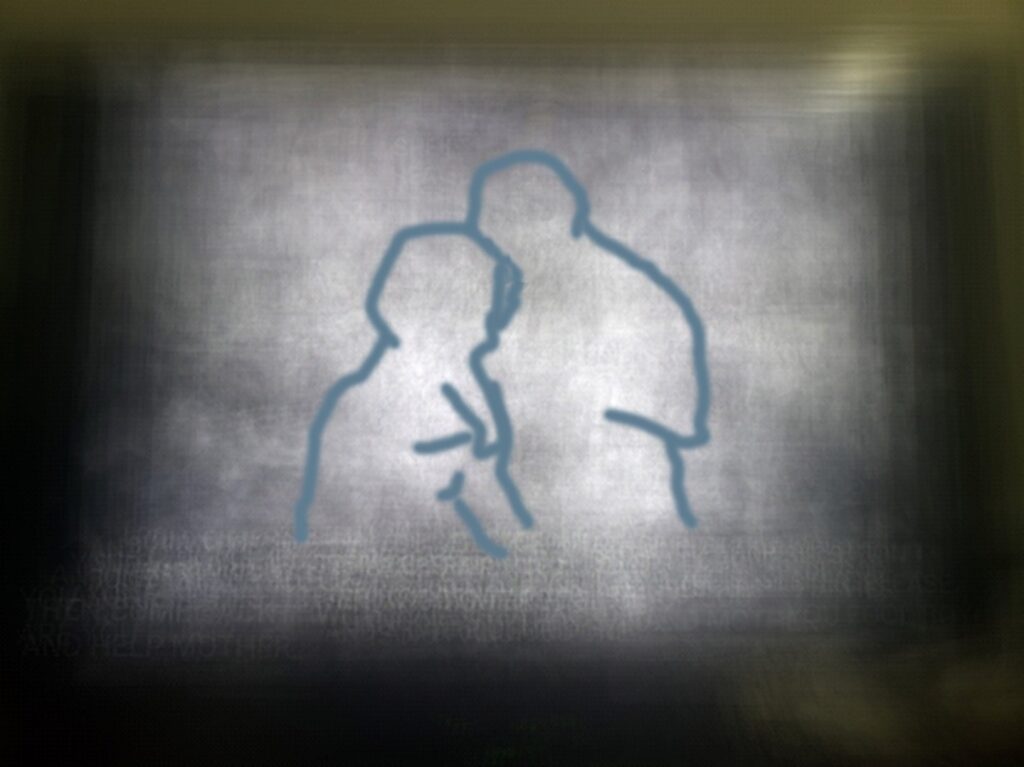
Now I would ask the viewer to please return to the previous image to see if they find the figures that I have highlighted here, were they there this whole time?
And so, Caravaggio or Michelangelo would turn this seemingly ruined image into a masterpiece12… by use of a glitch.
Third Example
Below there is a number of graphs created on the third “glitchable” topic: Video Games. I have kept almost all the video game consoles I have used for over more than two decades. The data is stored and scattered across said consoles. I am able to retrieve and put together a dataset of at least 100 games including title, year launched, hours played, whether I got to finish it, rating. I am considering including every single game I have ever played, but that would take a massive amount of time and effort. Initial estimates reflect at least 700 games and over 14000 hours played. According to Malcolm Gladwell that makes me a Master Player13. That is only to give a dimension of the extended experience I will be referring to in this third example which has led me to encounter a number of glitches. As a basis of comparison, I used the 2019 IGN Top 100 games of all time, then I complemented that list with critics’ and user’s scores from Metacritic. I then added my own data and ratings to the list. This creates a comprehensive dataset that hopefully gives the viewers a good sense of how good a game is.
Anybody interested in this type of entertainment would be able to see not only which ones made it to the list, but how they compare to each other in terms of quality and the time it takes to finish said games. It could even serve as a historic document that keeps track of those jewels for me and for others. This may be useful for those familiar with the matter, as well as those seeking to first immerse themselves in this industry by playing only la crème de la crème.
The visuals were made simple and colorful, mostly out of little squares to resemble the pixelated 80’s videogames. The viewer can stop at every “level” to examine, filter and “play” with the data, after which the viewer will continue scrolling down to the “final battle” stage of the “game”. There the viewer will encounter a final showdown between me, the critics and the users. All of this is adorned with a custom-made Arcade Controller to further emphasize the idea that the viewer (or “player”) has been playing a game all along. A bonus stage follows immediately after that showing the ultimate Top 100 Games of All Time resulting from combining the three data sets (the Final Battle).
It would seem that the first thing that comes to mind when mentioning the word “glitch” are computers, and a closely second or maybe even first are videogames. Videogame glitches have a sort of funny characteristic charm. It is because they do not happen in a superficial isolated environment like a text document in a computer, they happen inside a “world” where then something unexpected happens, causing an effect similar to seeing someone trip on the street or being pranked or a squirrel making strange dance moves at the park. This is the glitch in video games as most commonly understood and, this colorful and lengthy experience of mine of course, has not been perfect. Glitches have occurred to me. Here is one example I personally encountered while playing Dark Souls Remastered for Nintendo Switch:
As funny as they are and whatever the number of these I can present, I also wanted to explore the other forms of glitch in videogames. As I was reading Rosa Merkman’s examples of glitching videogames such as Quake 1 which is the one that has caused her “the biggest impression” (Merkman’s p. 7), I was formulating in my head a connection between videogames, noise, and glitches. Though I disagree with the concept of the Untitled Game as not only it seems a lazy attempt to avoid working from the ground up simply erasing the trademark at best, but a failure in comprehending human nature trying to challenge ‘self-improvement’, ‘competition’, and ‘winning’ (Menkman p. 39). Anyone who creates a game without considering those three or trying to “challenge” them, will have a game that nobody will want to play. Those three are the very top reasons why gamers play and have fun, not because it is a “convention” or a “normative”. Jodi simply does not understand this world of gaming. Hence hundreds of games continue to pay tribute to Quake 1, and not one has followed the Untitled Game recipe. It does not work. Plus, regardless of how good a game is, it already contains the possibility of glitches, there would not be a need to insert even more (except for Super Mario Galaxy, that one has no glitches at all).
Or maybe even Super Mario Galaxy has glitches if we examine it from the perspective of noise. In signal processing theory (which has existed in different forms since the 17th century), noise is generally considered in terms of the mechanical imprecision of instrumentation.14 Shannon’s adaptation of signal processing to communication theory accounts for external noise being introduced to the signal while it is in transmission, to obscure the purity of the signal. This kind of external noise has a particular materiality and enters into the equation as unexplained variation and random error15.
Shannon’s modelling of communication, in terms of signal and noise, consists of five basic steps. The transmission of information begins at the information source, which produces the message. A transmitter encodes the messages in signals made suitable for transmission, which it then sends through a channel. A receiver decodes the message from the signal, to finally deliver the message in its proper form to the destination, the machine for which the message is intended or where the message arrives.16
Given this definition, noise exists in video games, not only so, but there is also a constant desire to reduce noise and every technological advancement is specifically designed to reduce said noise. In these virtual worlds, noise could be found in a way that can only be found here: in the representations of objects or characters that are not well drawn due to the limitations of the machine. A circular object such as a person’s eye used to be represented by a squared pixelated sprite in a Super Nintendo, or a round Kirby could be actually a nonagon in a N64. In this sense, the non-exactitude of the figure is noise. Countless other examples of limitations such as the fog present in earlier open world games such as Grand Theft Auto, and Donkey Kong 64 used to hide the areas that the systems could not load/draw simultaneously. Something similar happened with the audio clarity which continued becoming increasingly complex and surrounding. With this in mind, let us then look at my own version of this diagram applied to video games:
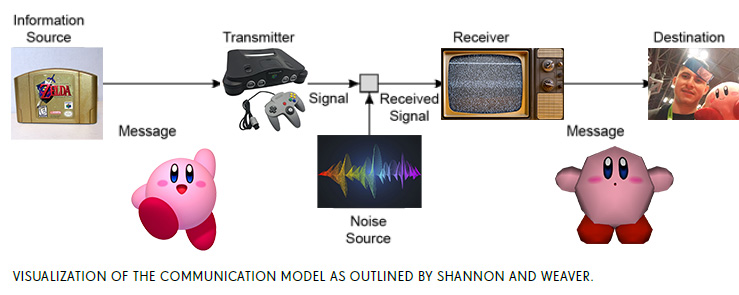
In this graph, the cartridge contains the game, which is the collection of all the designs, the world, the music, the characters, the storyline as the authors would like to present them. It can be revealed or decrypted by the transmitter, the console, which limits the vision the author has to wherever the technological achievement allows, not only the processing of the console but the quality of the TV and the sound system. The result is, for instance, the character but with features the author did not intend, one which resembles the original design and transmit much of the sentiment, but the artist did not draw the character by himself, the console has by then “helped” drawing the character to the best of its capabilities. That is the glitch in Videogames.
An entire musical genre was born as the result of this phenomena. Think of this:
This song, specifically like this, with its sound glitches and its poor flat quality and limited notes is more popular and symbolic than most if not all “popular” music of today. Songs that were written in this 8-bit form because of the limitations of the video game consoles, went on to become endeared pieces of art and culture which would now be preferred over a new more refined version of themselves. This is the glitch in Videogames.
When I started playing, this was a very small niche of super select individuals interested in these new (now rudimentary products) who were willing to pay a lot for a brief attempt at finishing a game with one quarter. Thanks to the wonders of free market, what was once a tiny guilty pleasure, increased exponentially in quality and became more and more widely successful and thus more available to users around the world. The birth of the pleasantly plump plumber not only saved the industry from total collapse17 but attracted the world to this form of entertainment, thus creating hundreds of thousands of jobs. New players do not have to pay hundreds of quarters anymore to save Pac-Man, defeat Shao Kang and Bison, or to finally decide which one is better, Contra or Metal Slug? With more players came more profit, thus more opportunities and incentives for improvement come along. The now three-dimensional and well-texturized plumber has since participated in pretty much every sport in existence, appearing in over 200 games while becoming the most famous face in the industry, even more famous than Mickey Mouse. Being a player a couple of decades ago was seen as the childish endeavor of a loser, a geek, a nerd, now if you are a good player, you can be a popular star. The video game industry has surpassed those of music and film combined18. The TV personalities, the rappers, the singers and the actors have been surpassed by the players and the programmers.
Throughout this journey, we have seen the forms, explored the causes and the effects, analyzed the utility, and visited pretty much every significant form in which a glitch can appear in these three beloved forms of art. We saw that they need to be accidental, but we also saw through examples that sometimes they can be so good, that the accident may become the norm. The search for excellence leads inevitably to some mistakes, but those unintended errors can be of profit.
“Within media design and development cultures, the pursuit of ultimate, noise-free and hi-fi channels and supposed highest levels of ‘reality’ has tended to be the Holy Grail (epitomized for example as media dreams in the Holodeck of Star Trek, or the direct brain cinema of Bigelow’s Strange Days, and so on). While the ideal is always unreachable, innovation is nevertheless still assumed to lie in finding an interface that is as non-interfering as possible, enabling the audience to forget about the presence of the medium and believe in the presence and directness of immediate transmission.” Menkman (p. 14)
Bibliography
- Menkman, Rosa, The Glitch Moment(um), Network Notebooks: Amsterdam, 2011.
- Sylvere Lotringer and Paul Virilio, The Accident of Art, Semiotext(e): New York, 2005. p. 63.
- Giovanni Gaye, Carteggio inedito d’artisti del sec. XIV, XV, XVI, Florence: 1839–40, 2: 454 and Charles Seymour, Michelangelo’s David: A Search for Identity, Pittsburgh: Pittsburgh University Press, 1967, 134–137, doc. 34.
- Darwin, Charles, 1809-1882. On the Origin of Species by Means of Natural Selection, or Preservation of Favoured Races in the Struggle for Life. London :John Murray, 1859.
- The American Heritage® Dictionary of the English Language, Fourth Edition, Houghton Mifflin Company, 2004. http://dictionary.reference.com/browse/glitch.
- Elisabeth Bumiller, “We Have Met the Enemy and He Is PowerPoint,” The New York Times (April 26, 2010), 1.
- Trofimov, Yaroslave. “Can We Still Lead.” WJS, The Wall Street Journal, November 06, 2020, Can the West Still Lead? – WSJ. Accessed December 15, 2021.
- “Cimarron (1960) – Anthony Mann – Synopsis, Characteristics, Moods, Themes and Related – AllMovie”. AllMovie. Retrieved December 17, 2017.
- Marshall Mcluhan, Understanding Media: The Extensions of Man, New York: McGraw Hill, 1964.
- Schneider CA, Rasband WS, Eliceiri KW (2012). “NIH Image to ImageJ: 25 years of image analysis”. Nat Methods. 9 (7): 671–675. doi:10.1038/nmeth.2089
- Salavon, Jason. The Grand Unification Theory 1992. Jason Salavon | The Grand Unification Theory. Accessed December 2021
- Vasari, Giorgio (14 August 2008). The Lives of the Artists. Oxford University Press. ISBN 9780199537198 – via Google Books.
- Gladwell, Malcolm (2008). Outliers. Little, Brown and Company. pp. VII–IX. ISBN 978-0-316-01792-3.
- PaoloPrandoniandMartinVetterli,SignalProcessingforCommunications,Lausanne:EPFLPress,2008, http://www.sp4comm.org/webversion.html.
- Susan Ballard, ‘Information, Noise and et al’, M/C Journal, 10.5 (October, 2007), http://journal.media-culture.org.au/0710/02-ballard.php.
- Claude Elwood Shannon, ‘A Mathematical Theory of Communication’, Reprinted with corrections from The Bell System Technical Journal, Vol. 27 (July, October, 1948): p. 2.
- Coates, James. “Super Mario Bros.” Chicago Tribune, May 18, 1993. http://www.chicagotribune.com.
- Slatzman, Marc. “E3 2021: Video games are bigger business than ever, topping movies and music combined”. USA Today, June 10, 2021. http://www.usatoday.com
